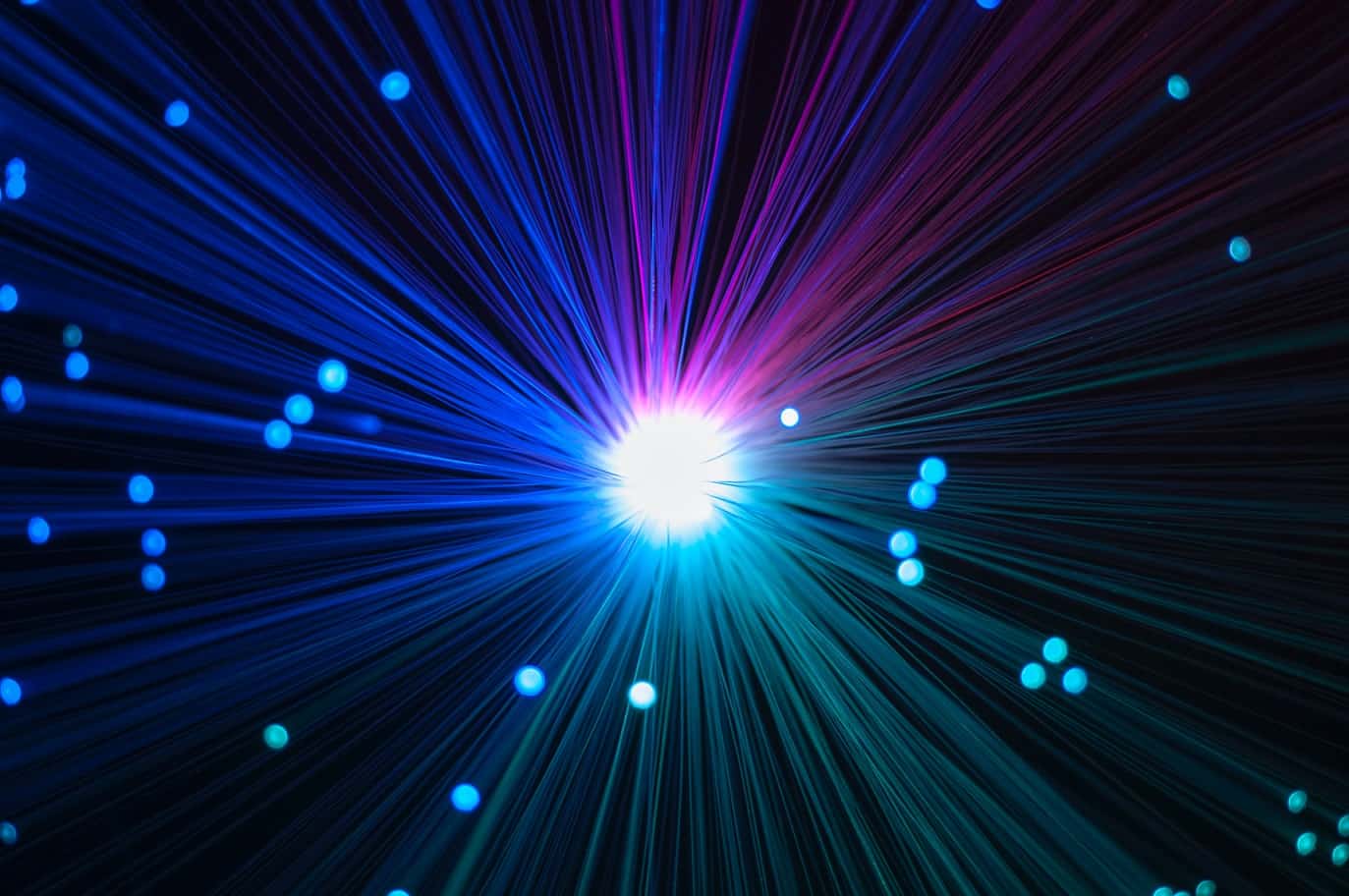When do you use dark fiber? Who’s dark fiber best suited for? What are the benefits of dark fiber service? In this article, I will explain what dark fiber is and answer the questions above.
It’s trends like cloud, edge computing, satellite Internet, 5G networks, and Internet of Things (IoT) that are exponentially increasing enterprise connectivity requirements. Interconnection between data centers, office campuses, headquarters, and even cell towers have become extremely important. Because of these trends, enterprise customers are now considering dark fiber service when comparing commercial Internet service offerings.
First, what is dark fiber? It’s described as an alternative to commercial internet services like Dedicated Internet Access (DIA), point-to-point, and broadband. Dark fiber, also commonly referred to as a leased line, simply refers to fiber optic cable that has been laid in the ground but is not currently in use.
What’s amazing is that only 10% of the cost of a dark fiber route is the actual fiber optic cable. Most of the cost is born out of permitting, fiber route construction, equipment, and manhours. Most new fiber routes are constructed alongside new roads and highways. Major construction projects present the opportune time to lay fiber. However, it’s still not cheap even with existing construction and improvement projects. And given that it’s not cheap to create a new fiber route, dark fiber providers focus on placing as many fiber strands in the ground as possible. As many as 50% of dark fiber capacity is being used. This leaves an additional 50% available for companies to lease.
With dark fiber, customers can reduce their costs, improve latency and provide increased redundancy for disaster recovery and business continuity (DRBC).
So, why would an enterprise consider leading dark fiber?
1) Dark Fiber Cost-Savings
Why would an enterprise consider dark fiber? The primary reason to consider dark fiber vs commercial internet service is cost-savings. Enterprises with a lot of data need the capabilities to move that data between locations. They have a couple of options – build their own fiber network, purchase commercial internet services, or lease dark fiber from a telecom carrier or Internet Service Provider (ISP).
For enterprise customers and government agencies, dark fiber will save substantial amounts of money over the above-mentioned alternatives and options. It’s obviously very expensive to bring up your own dark fiber network and commercial Internet options can cost tens of thousands of dollars per month.
2) Latency Improvements With Dark Fiber
Another important factor impacting the decision to select dark fiber is latency. When an enterprise uses commercial Internet services from an ISP like a Comcast, CenturyLink, Verizon, or AT&T, that traffic gets bounced around to many different points before arriving at its destination. However, with dark fiber, enterprises can get a straight line from point A to point B, which improves performance and reduces latency.
For certain applications, customers need to get data transferred really quickly from one place to another. Examples could be financial and stock trading, research, and streaming data. The best way to accomplish this is to setup your own private network without the additional stops in between.
3) Dark Fiber Improves Redundancy?
It may sound counterintuitive but dark fiber can help some enterprises by providing an additional layer of physical redundancy for their existing systems. Many enterprise customers have a primary and secondary Internet circuit for redundancy purposes. This deals directly into their disaster recovery and business continuity (DRBC) plan. In this case, the customer would have a carrier provided Internet connection and their own dark fiber connection. In the event of a natural or human caused disaster, customers could lose their carrier Internet and still be up and running on the private, dark fiber network they have in place.
4) Dark Fiber Upfront Costs & Management
Many CIOs and CTOs that deal in big data and have mission-critical transfer requirements typically lack trust in their Internet provider or telecom carrier. Instead, they will chose to run their own fiber links to make sure that they are getting the most physical redundancy possible.
We’ve mostly written about the benefits of dark fiber. However, what are the disadvantages or pitfalls of dark fiber? There are a few. The number one downside to dark fiber is the high upfront costs. In addition, enterprises should have their own internal team that knows how to manage their network. This includes network configuration, maintenance and troubleshooting should it go down. This adds a lot of unforeseen and hidden costs to the equation.
What if your organization doesn’t want to manage their dark fiber network? Is there an alternative? Yes, many telecom carriers and ISPs offer managed dark fiber services. There is definitely a cost associated with this managed service and it is typically included in the pricing per fiber mile. You should take the time to vet out potential providers offering managed services for dark fiber to ensure that you have the support needed to manage and maintain your own private network.
5) Don’t Let Dark Fiber Disadvantages Discourage You
The disadvantages of dark fiber can sometimes discourage some from selecting this option for their private network and connections. Many enterprise customers that research, whether dark fiber may be the right fit for their organization, may fear the disadvantages and unknows associated with it.
Need Help With Your Dark Fiber Strategy?
Many enterprises and governments have implemented their dark fiber, and many would argue that it’s not as intimidating as it sounds. Customers have found that setting up links in a DWDM connection was not as difficult as they expected. This is especially true for those that brought in help – a senior network engineer, architect, or consulting that knows the dark fiber space. An outsider can provide valuable insight, guide you through the process, and train you and your team on how to operate and manage your dark fiber connections.
Since 2002, I’ve focused on helping large enterprise customers and government agencies with their interconnection strategy and services. This includes helping customers determine the right Internet solutions and providers for their projects. Unlike going direct to a telecom carrier or ISP, GCG and Datacenters.com offer direct access to 300+ providers globally including AT&T, Verizon, CenturyLink, Zayo, Comcast, euNetworks, BT, Telstra, Telia, and many others.
Need help determining whether or not dark fiber is the right fit for your business? Contact me for a free, no-hassle consultation and information on available telco carriers and ISPs for your locations. I have access to fiber maps, lit building lists, and other resources to streamline the decision-making process.

